|
Page < 1 2 3 4 5 6 7 8 9 10 11 12 >
The revolutionary contents of the Vedas
Western attitude towards Vedic literature
 A
P J (Avul Pakir Jainulabdeen Abdul) Kalam ( 1931
- ) Noted Scientist and President of India. India who
reads the Bhagavad Gita and the Koran. He said, India should seek
to become like the perfect nation defined in Thirukkural,
the ancient Tamil discourse. A
P J (Avul Pakir Jainulabdeen Abdul) Kalam ( 1931
- ) Noted Scientist and President of India. India who
reads the Bhagavad Gita and the Koran. He said, India should seek
to become like the perfect nation defined in Thirukkural,
the ancient Tamil discourse.
He described the Veda as,
"They are
the oldest classics and the most precious treasures of India. The
soul of Bharatiya sanskriti dwells in the Vedas. The entire world
admits the importance of the Vedas."
(source: Vedas,
soul of India - By Dina Nath Mishra -
dailypioneer.com).
***
The Western world has known about the revolutionary contents
of the Vedas for almost two centuries, but rare is the Western
Indology expert who considers the texts a reasonable
documentation of human civilization. Even
Indian scholars have been trained to feel apologetic or
disdainful about what has come to be viewed as the Vedas’
gross exaggerations and fantasies concerning the ancients.
A L Basham, who wrote the popular classic The Wonder that Was
India, is one of many.
For a quick glimpse at what unsung surprises may lie in the
Vedas, let us consider these renditions from the Yajur-veda and
Atharva-veda, for instance. Here are the possibilities of verses
when in the hands of a sympathetic Sanskrit translator:
" O disciple, a student in the science of government,
sail in oceans in steamers, fly in the air in airplanes, know
God the creator through the Vedas, control thy breath through
yoga, through astronomy know the functions of day and night,
know all the Vedas, Rig, Yajur, Sama and Atharva, by means of
their constituent parts."
" Through astronomy, geography, and geology, go thou to
all the different countries of the world under the sun. Mayest
thou attain through good preaching to statesmanship and
artisanship, through medical science obtain knowledge of all
medicinal plants, through hydrostatics learn the different uses
of water, through electricity understand the working of ever
lustrous lightening. Carry out my instructions willingly."
(Yajur-veda 6.21).
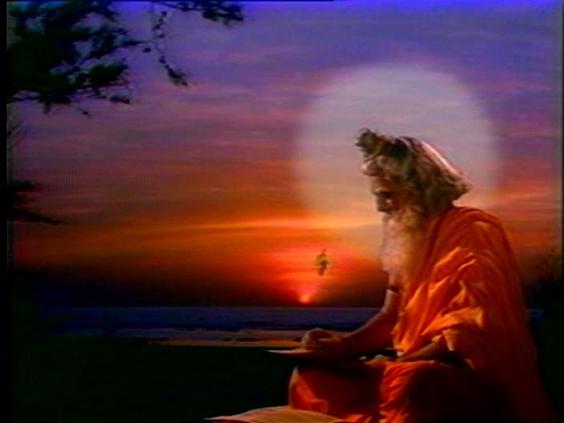
Vedic
rishis.
The first 19th century
European scholars to encounter the Vedas often brimmed with awe
and admiration.
Even
Indian scholars have been trained to feel apologetic or
disdainful about what has come to be viewed as the Vedas’
gross exaggerations and fantasies concerning the ancients.
***
" O royal skilled engineer, construct sea-boats,
propelled on water by our experts, and airplanes, moving and
flying upward, after the clouds that reside in the mid-region,
that fly as the boats move on the sea, that fly high over and
below the watery clouds. Be thou, thereby, prosperous in this
world created by the Omnipresent God, and flier in both air and
lightning." (Yajur-veda
10.19).
" The
atomic energy fissions the ninety-nine elements, covering its
path by the bombardments of neutrons without let or hindrance.
Desirous of stalking the head, ie. The chief part of the swift
power, hidden in the mass of molecular adjustments of the
elements, this atomic energy approaches it in the very act of
fissioning it by the above-noted bombardment. Herein, verily the
scientists know the similar hidden striking force of the rays of
the sun working in the orbit of the moon." (Atharva-veda
20.41.1-3).
Sanskritists will fight over translations. Needless to say,
rare is the Western scholar who will let these verses speak in
this way. To calmly admit that the
Yajur and Atharva-veda speak of electricity, nuclear energy, and
aircraft is to violate every bias and preconception that forms
the edifice of our Western creed.
The Western attitude toward Vedic literature, however, was
not always so insensitive and
dismissive. The first 19th century
European scholars to encounter the Vedas often brimmed with awe
and admiration. Whether these original European savants of India
understood the full ramifications of the Vedic world view is, of
course, doubtful. But certainly they were deeply moved by the
philosophical wisdom, breadth, and eloquence of Vedic knowledge.
The prime concern of Europe with India, however, was commerce.
(source: Searching
for Vedic India - By Devamitra Swami p.
155 - 157).
For more refer to chapters on Vimanas,
Advanced Concepts,
Hindu
Cosmology and Hindu
Culture1).
Top
of Page
US tells India, drop
dead – by Kanchan Gupta
F-16s
for Pak
A friend,
usually upbeat about India-US relations, sent me an angry mail
over the weekend after President George Bush called up Prime
Minister Manmohan Singh on the evening of March 25 to inform him
that the US had decided to supply F-16 fighter jets to Pakistan
and Secretary of State Condoleezza Rice, in an interview to The
Washington Post, "dismissed concerns" about the
fallout of the American decision. The mail reads:
"lovely
Easter gift to India from the US.
moral:
proliferate nukes, threaten US interests everywhere, be terror
hub, and get rewarded for it. this has been north Korea's
experience, china's experience, Saudi Arabia's experience, and Pakistan's
experience.
Suck
up to the us, desperately crave its goodwill, allow its odious
conversion machine to dictate terms to you, and get slapped on
the face. this is India's experience.
Simple
solution for India: proliferate nuke and missile technology to
anybody who wants it, especially Taiwan and Japan. this will
immediately get American respect, much as Pokhran-II did."
The
issues that arise from USA's decision to strengthen Pakistan's
strike power, I feel, are much larger than merely seeking or
getting "American respect." A
nation whose civilizational history stretches back to 5,000
years, that is more than Americans can count without a Texas
Instruments TI-83, and whose billion-plus population is not
dependent on American wheat surplus of the PL 480 variety, can
do without "American respect." Thank you
very much, but America is welcome to stuff its
"respect" in a hot dog.
India
Slams U.S. Move to Sell F-16 to Pakistan -
"The reasons for which
Pakistan is provided with this level of weapons are not much
justified," Defense Minister Pranab Mukherjee told
reporters Monday. "The reason is that it will help Pakistan
to fight against terrorism and the Taliban. But this type of
equipment is not required to fight against terrorists. This
equipment is required for a full-fledged war."
(source: US
tells India, drop dead – by Kanchan Gupta
and
India
Slams U.S. Move to Sell F-16 to Pakistan - yahoo.com).
Top
of Page
Former Air Force colonel Kirby Knox is a born-again Hindu
 As a former colonel in the U.S. Air
Force, Kirby Knox is accustomed to giving orders as
much as following them. These days, however, he's willingly
surrendering to a guru as part of his spiritual practice. As a former colonel in the U.S. Air
Force, Kirby Knox is accustomed to giving orders as
much as following them. These days, however, he's willingly
surrendering to a guru as part of his spiritual practice.
Knox, a 53-year-old physician who
received his medical training while in the military, is a
devotee of Ammachi,
a Hindu holy woman revered as the "Hugging Saint"
because of her practice of transmitting blessings in the form of
hugs to millions of people around the world. Knox,
who practices acupuncture and other alternative therapies in
Richmond and San Leandro, has been fascinated by Eastern
religious ideas and practices since his days as a cadet at the
U.S. Air Force Academy.
What was your attitude about the church as you got older?
I didn't understand how someone from
a different country -- like, say, in the heart of Africa -- who
was not raised a Christian would be consigned to Hell for not
taking Jesus as his personal savior. Then, when I was
in high school, I had an English teacher -- he must have been an
atheist or something -- who raised a lot of philosophical
questions around religion. At some point during that time, I
just decided I didn't believe what the Methodist Church was
propagating.
How would you describe your spiritual orientation these days?
I guess you could say I'm a
born-again Hindu. My spiritual practices, the services I go to,
are all centered in Hinduism -- although it feels kind of funny
to say that, given my Christian background.
Do you have a particular spiritual practice? I do quite a few things. I have a mantra that Amma gave me.
I'm supposed to recite it 108 times a day. But I try to do it as
much as I can, when I'm shaving or driving my car. I also try to
get up once in the middle of the night to pray and meditate for
an hour or so.
(source: Former
Air Force colonel Kirby Knox is a born-again Hindu - sfgate.com).
Top
of Page
Secularism In India - India’s
burden of bad ideas ?
Secularism
today ranks foremost among India’s burden of bad ideas, a term
coined by Prof. Shiva Bajpai to debunk the ill-founded Aryan
Invasion Theory, which held academics in thrall for a century
before being flung into the dustbin of history. The term secular
entered India’s political vocabulary as a device to disarm the
Hindu majority and inhibit _expression of resentment against
minority-appeasing policies of successive Governments.
Given
the shoddy motives of its promoters, it is surprising that the
term secular has come to acquire such a powerful hold over the
elite. Secularism is not a lofty ideal,
like liberty or equality. It owes its birth to Christianity’s
inability to maintain peace between warring Christian sects,
especially as the State itself sponsored pogroms against different
denominations. Wearied of prolonged intra-religious
warfare, France invented secularism to ensure State neutrality in
matters of faith, and separation of Church and State.
Secularism
was thus born as an extra-religious answer to the intolerance of
both Church and State.
Hindu civilization has never, even when under murderous assault,
indulged in pogroms on grounds of faith. Hence, unlike western
concepts of democracy and equality, which find resonance in Indian
hearts, secularism cuts no ice with the masses. India
has traditionally vested spiritual authority in the guru and
political power in the king, and given the latter the duty to
protect dharma.
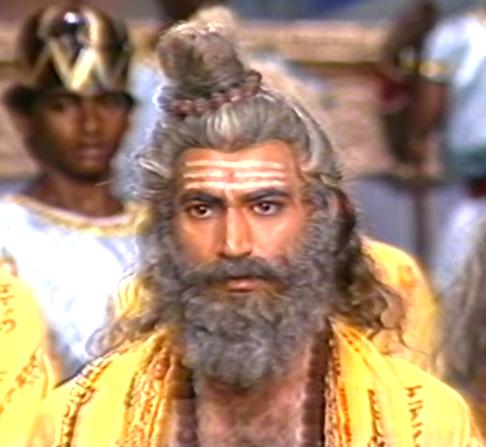
India
has traditionally vested spiritual authority in the guru and
political power in the king, and given the latter the duty to
protect dharma.
(For
more refer to chapter on Greater
India: Suvarnabhumi and
Sacred Angkor).
***
Dharma is
not religion in the sense that monotheistic creeds are. Dharma is
a generic term for all native spiritual experience and includes
the specific dharmas of specific groups (desachara, lokachara),
which the king is duty bound to uphold and protect.
Since dharma was never identified with a specific doctrine, the
State was never doctrinaire. However, the State was always dharmic
(non-secular, non-communal), because dharma is all-encompassing
and embraces all without discrimination. The duty of the State
(king) in Hindu thought is best exemplified by the concept of Rajdharma,
which is a sacred duty for which the ruler can sacrifice anything.
Stories of the travails of Raja Harish Chandra and the sufferings
of Shri Rama reflect how seriously the monarch is expected to take
his responsibilities and fulfill commitments.
Dharma is thus not co-terminus with religion; the closest Indian
word for religion is pantha. Secularism in India, as noted jurist Dr.
L. M. Singhvi insisted when translating the modified
Preamble of the Constitution into Hindi, is pantha-nirpeksha
(non-discrimination towards individual faiths). So, while
‘secular’ is the opposite of ‘religion’ and
‘communal,’ dharma is neither secular in the sense of being
anti-religious nor communal in the sense of favouring a particular
sect.
This brings us to the peculiar practice of secularism in modern
India. While the proper definition of secularism should be
pantha-nirpeksha, as noted previously, the media and politicians
speak of dharma nirpeksha or neutral in the matter of religion.
This is antithetical to Hindu civilizational experience which
demands that the State respect and uphold dharma; but this is only
part of the problem.
The real difficulty is that even dharma nirpeksha is not
implemented honestly. Dharma nirpeksha means the State should be
aloof from all religions or treat all equally. The Indian
Government however, has not been religiously neutral since
independence itself. Despite the terrible sufferings of Hindus
before and during Partition, Mr. Jawaharlal Nehru created the
false bogey of “majority communalism” to create and
consolidate a Muslim votebank for Congress. The first blow was
struck with the refusal to implement a uniform civil code, even
though this was both desirable and possible at the time of framing
the constitution.
(source: Secularism
In India - By Sandhya Jain -
organiser.org). Refer
to Who
Killed Our Culture? We Did
- By Youki
Kudoh
- time.com
May 3 1999.
Top
of Page
Hindu temple razed by religious
police in Saudi Arabia
Will Indian 'bleeding heart' Secularist advise banning the visit of all Saudi
Government officials to India?
Riyadh: Saudi religious police have
destroyed a clandestine makeshift Hindu temple in an old
district of Riyadh and deported three worshippers found there, a
newspaper reported today (March 26, 2005).
Members of the Commission for the
Promotion of Virtue and Prevention of Vice, or muttawa
or Islamic religious
police, stumbled across a room converted into a
temple while raiding a number of flats suspected of being used
to manufacture alcohol and distribute pornographic videos, pan-Arab Al-Hayat said.
"They were surprised to find that one room had been
converted into a Hindu temple," it said.
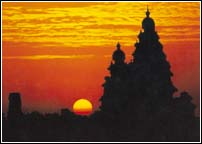 A caretaker who was found in the worshipping area ignored the
religious police orders to stop performing his religious
rituals, the paper added.
A caretaker who was found in the worshipping area ignored the
religious police orders to stop performing his religious
rituals, the paper added.
He was deported along with two other men who arrived on the
scene to worship. All forms of
non-Muslim worship are banned in ultra-conservative Saudi
Arabia, which is home to Islam's holiest shrines.
The US Commission on International Religious Freedom
(USCIRF),
an advisory panel, last month urged the US Government to impose
sanctions on Saudi Arabia, as well as Vietnam and Eritrea, for
violating religious rights.
Last year, the US State Department
for the first time named ally
Saudi Arabia, as well as Eritrea and Vietnam, "countries of
particular concern" in its annual report on religious
freedom. A list previously included China, Iran, Myanmar, North
Korea and Sudan.
(source:
Hindu
temple razed by religious police in Saudi Arabia -
indiainfo.com and Religious
police destroy Hindu temple - Washington Times). Refer
to My
People, Uprooted: "A
Saga of the Hindus of Eastern Bengal"
- By Tathagata Roy
Top
of Page
India In The Dock
The United States has stuck to its guns expressing inability to
revise its decision on Modi visas. Time
to celebrate for all those secular-minded countrymen who deposed
against their country before foreign commissions on religious
freedom, for scholars who thrive on distorting history, for
foreign-funded campus pedagogs, for proselytizers, for
terrorists and in short for all those who wish an egg on India's
face. They have succeeded in besmirching India's image as a
secular country where, despite Akshardhams
and Coimbatores,
the minorities flourish and prosper....
Delighted they all must
be that a country with debatable human rights record has humbled
a billion people. Thanks are no less due to those
English newspapers for which famine and hunger can wait but not
the call of secularism.
For all its sins of the past, including the 1984
Sikh massacre, the Congress has seen it fit to rise
above partisan politics and protest the US diplomatic
aberration.
But why blame the Americans when
Indians themselves did India in. All those award-hungry human
rights activists, rabid communal organizations representing the
Indian minorities, intellectuals hiding their Indian identity
behind South Asian masks and media persons with strange
loyalties to the fiction of a global community saw nothing
treacherous in appearing before foreign tribunals pillorying
their country even as they are aware that their activities have
weaned the minorities permanently away from the mainstream. They
did the greatest damage to what they fondly call the country's
secular fabric.
The American logic does not stand a minute's scrutiny. They
depended on lies spread by the media and the NGOs. Even as the
cars of the Godhra Express and bodies trapped inside were
burning, the country's English newspapers unleashed a media
genocide of the majority community spreading unabashed lies
about what happened in Gujarat. Wealthy NGOs flew fact-finding
teams into Gujarat to deserve the generosity of their donors.
Editors left their air-conditioned workstations to visit
trouble-torn spots in Gujarat to find evidence that matched
their findings. Anti-democratic forces
traveled all the way to the United States to appear before the
State Department's International Commission for Religious
Freedom. All of them forgot that there is a well-documented
history of communal riots in the country, much of it in the 40
years of Nehru-Gandhi rule.
The Federation of Indian
American Christian Organizations of North America (FIACONA)
has said that it is "pleased" at the US government's
decision of denying a visa to Gujarat Chief Minister Narendra
Modi. It
was easy to activate Pitts since he had first hand knowledge of
Gujarat. He had been there on a private visit last year and
never stopped talking about the persecution of Christians and
Muslims. P. D. John who
leads the Federation of Indian American Christian Organizations
of North America (FIACONA) was walking the halls of the US
Congress, reminding young staffers of Gujarat 2002 and the arson
in the Dangs.
(source: India
In The Dock - By Dasu
Krishnamoorty - saag.org). For
more refer to Lies
catch up with Arundhati Roy - outlookindia.com
and And
Suddenly, We Care...
(For more refer to US
in Iraq: ‘not in our name’ - By Angana Chatterji -
dailytimes.com).
Refer
to Bible
thumpers: Americans
are being increasingly stereotyped as stupid - By Arvind
Kumar - indiareacts.com).
Top
of Page
'Indians
are bastards anyway' - said President Richard NIxon
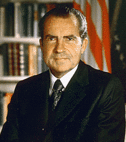 "Indians are "a
slippery, treacherous people", said Republican
President Richard Nixon.(1913
- 1994). "Indians are "a
slippery, treacherous people", said Republican
President Richard Nixon.(1913
- 1994).
"The Indians are
bastards anyway. They are the most aggressive goddamn people
around," echoed his assistant for national
security affairs, Henry Kissinger.
The setting: a White House meeting on July 16, 1971, during the
run-up to the India-Pakistan war which ultimately led to the
birth of Bangladesh, erstwhile East Pakistan.
The US State Department
recently declassified some of the Nixon White House tapes and
secret documents that bring to light the way in which the Nixon
administration went about the Bangladesh saga, reflecting the
potential of mindsets and personal equations taking precedence
over ground realities in White House decisionmaking.
In 1971, some 3 million people are estimated to have been killed
in the genocide unleashed by Pakistan's military government on
East Pakistan, leading to a rush of refugees into India, drawing
India into a swift and decisive war that eventually forced
Pakistan's hand. But all along, the Nixon administration sided
with the military establishment of Pakistan over democratic
India because of Nixon's "special relationship" with
Pakistan's handsome military dictator, General
Yahya Khan, and his uncontrolled revulsion at the
"old witch" Indira Gandhi, India's then prime
minister.
Despite the avowed goal of containing war, the US
administration, in its zeal to put India in a spot, even went to
the extent of pleading with the Chinese to initiate troop
movements toward the Indian border in coordination with
Pakistan, and assured it support in case the Soviet Union jumped
into the fray. Near the end of the war, in a highly secret
meeting on December 10, 1971, Kissinger pitched the idea to
Chinese ambassador to the UN, Huang Ha. The declassified
documents reveal that China took a couple of days to think about
it and finally said it was not game, much to Kissinger's
disappointment.
Even as the refugee situation was escalating, the Nixon
administration kept playing politics. Sample this conversation
at the White House a day after George
Harrison and his soul mate, Indian sitar player Ravi
Shankar, held the "Concert
for Bangladesh" to raise money for the refugees.
"So who is the Beatle giving the
money to - is it the goddamn Indians?" asks Nixon. "Yes,"
says Kissinger, adding that Pakistan had also been given
$150,000 in food aid, but the major problem "is the goddamn
distribution". Nixon butts in:
"We have to keep India away."
(source: 'Indians
are bastards anyway' -
By Debasish Roy Chowdhury - AsiaTimes.com).
Top
of Page
Chinese Premier quotes Upanishad
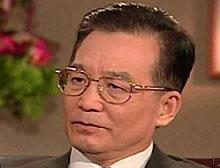 Beijing:
Chinese Premier Wen Jiabao
today quoted extensively from the Upanishads
in
his speech. Wen quoted the Sariraka
Upanishad to discount the theory that China and
India are rivals and not friends: Beijing:
Chinese Premier Wen Jiabao
today quoted extensively from the Upanishads
in
his speech. Wen quoted the Sariraka
Upanishad to discount the theory that China and
India are rivals and not friends:
"May
he protect us both together; may he nourish us both together;
may we work conjointly with great energy, may our study be
vigorous and effective; May we not hate any; let there be peace,
let there be peace, let there be peace!’’
Chinese
Premier Wen Jiabao on Monday announced that he will
visit
India soon with a three-point agenda, including enhancing
bilateral ties
to
strategic levels and to seek a ‘‘fair’’ resolution to
the vexed boundary
issue
on the basis of ‘‘mutual accommodation and accommodation of
reality’’.
Speaking
at his annual customary press conference at the end of the
10-day
session
of the National People’s Congress (NPC), Wen
stressed China and India
were
not rivals but friends, and both countries shall work together
to tap the
potential
of bilateral cooperation and find a ‘‘fair, reasonable and
mutually
acceptable
plan’’ to solve their border disputes, Wen said amid rare
applause
from
over 700 reporters at the Great Hall of the People.
‘‘I
hope you can send my message back to the great Indian people,
that we’re not
competitors,
we are friends,’’ said Wen when asked to comment on
bilateral
relations,
ahead of the 55th anniversary of the establishment of diplomatic
relations
between India and China on April 1.
Stating
that China and India will celebrate next month the 55th
anniversary of
the
establishment of their diplomatic ties, Wen expressed the hope
that the
anniversary
would ‘‘become a new starting point for Sino-Indian friendly
cooperation’’.
(source:
Chinese
Premier quotes Upanishad -
indianexpress.com).
(For
more refer to chapter on Greater
India: Suvarnabhumi and
Sacred
Angkor).
Top
of Page
New
dimensions of secularism in India
Why did the Karnataka Chief Minister and other
seculars proudly participate in the mass proselytising event of
Benny Hinn, who abused Hindus and Hindu Gods?
How is it that E.
Ahmed of the Muslim League is ‘secular’ and L.K Advani of
the BJP ‘communal’? Why is the Kanchi Matham being hounded
while the raid on the Islamic religious school at Nadwa to catch
ISI insurgents was called off and Central ministers sent to
apologise to Ali Mian for the raid? How is it that ‘secular’
intellectuals are asking for the release of the Godhra accused
and none of them is bothered about Vijayendra Saraswathi in
jail?
For ‘secular’ India,
secularism is not divorced between the state and religion. For
them secularism is exclusively for the benefit of the
minorities. Extend it, secularism means pampering the
minorities. Go further, it includes
being allergic to the majority. That is, unless one explicitly
appeases the minorities and is overtly allergic to Hindus, one
is not ‘secular’ enough. How did secularism
acquire these new dimensions? Simple: it became a tool of
politics. Politics is all about uniting the supporters and
dividing the opponents. In Indian politics, uniting a minority
for votes is ‘secular’. It is ‘secular’ to divide the
majority into this or that caste for votes. Consequently,
uniting the majority is anti-‘secular’. And organising the
majority is fundamentalist. In contrast, protecting organised
minority is a ‘secular’ duty. This is the high point of
‘secular’ India. A novice in
Christian history would know that secularism originated in
Christendom as a rule of separation of the Christian church and
the Christian state. But how come what started off as an issue
of Christian church versus the Christian state has become an
issue of majority versus minority?
With Martin Luther’s revolt against the ‘Catholic Church’
arrived the ‘Protestant Church’. This weakened the Papacy
and eventually broke up the Holy Roman Empire. The broken pieces
of the Empire, by permutation and combination, became the modern
nation-states in Europe. But these separated nation states also
owed allegiance to Christ and Bible. These developments were all
intra-Christian, within Christendom. No other religion was in
the picture. The Church had ensured
that no indigenous faith survived after Christianity took charge
of Europe. Till this
point no one had heard of secularism. It
was only when the national Christian churches clashed with the
national Christian states for primacy that a formula had to be
worked out. That formula was that the Christian State
would prevail in worldly issues that were considered to be
‘secular’ in Christian theology. In the Abrahamic world all
matters pertaining to the ‘other world’ were sacred, and the
worldly issues ‘secular’. This was how secularism was born.
It separated what Christianity regarded as ‘sacred’ from
what it classified as ‘secular’. But the common denominator
was the Christian theology and what it certified as sacred and
‘secular’. In the European model, the Christian state was
not actually creed-neutral. It was
neutrality between the Christian state and the Christian church
within Christianity. Secularism mandated that the
Christian church would not interfere in matters of the Christian
state.
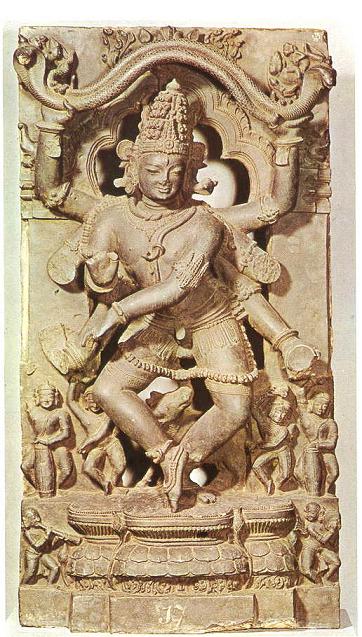
Secularism as understood in India protects the
organised minorities. It leaves the unorganised Hindu majority
completely unprotected and undefended.
(For
more refer to chapter on Greater
India: Suvarnabhumi and
Sacred Angkor).
***
It was the
advent of democracy, not secularism, which gave the survival
space non-Christian faiths in Christendom. The Christian states
ruled by Christian monarchs began clashing with the people when
the people began demanding more rights. This is where
individualism began conflicting with monarchies. The clashes
triggered movements for democracy. It was democracy that really
shaped the institution of secularism as later understood in the
modern West. Still, secularism in the West was an all-Christian
affair. It was an intra-Christian discipline. The state stood
neutral between the Christian church and Christians, whether
faithfuls or heretics. But democracy offered space for atheists
and agnostics. Added to that was emigration from the rest of the
world which turned the Christian West multi-religious and
multi-racial.
But
here in India, while the minorities are organised around their
book and their prophets, the majority faith, the Hindu faith, is
totally unorganised. In fact, it is not organisable
at all. With 33 crore Gods to be propitiated one can understand
how impossible it is to organise Hinduism. So
we have organised minorities on the one hand and unorganised —
why un-organisable — majority on the other. With
the result secularism as understood in India protects the
organised minorities. It leaves the unorganised majority
completely unprotected and undefended. Vote bank
politics made it worse. Since the minorities are organised they
become readymade vote banks, mere ballot papers. But the Hindu
majority does not behave or vote as majority. This is so even on
issues of faith as the divergent faiths and Gods within Hinduism
makes it difficult for them to unite like the minorities.
‘Secular’ India denies to the majority the rights it
reserves for the majority. So secularism in essence treats the
‘secular’ state as a majoritarian institution. In
Christendom, the majority is Christian any way. And they are
also organised additionally.
But, ‘secular’ India will not allow the Hindus to unite. It
will snuff out any attempt to organise the Hindus, label those
who attempt it as communalists and fundamentalists. But,
unless Hindus get organised, ‘secular’ India will not allow
Hinduism to survive. Then, will ‘secular’ India not do to
Hinduism what Christianity did to Roman paganism? The
Encyclopedia of Britannica
says that Rome did not know how to handle Christianity that
negated all other faiths. The inability of Roman Pagans to
handle an intolerant faith, as the encyclopedia repeatedly
refers to Christianity, caused the collapse of the Roman
Paganism. ‘Secular’ India’s
intolerance to Hindus is similar. The Hindus have to handle
‘secular’ India like the minorities do. That is, the Hindus
have to get organised and create a majoritarian regime. This is
a rule of survival for them. And for the survival of a
faith-neutral state itself! The question is, will they do it in
spite of ‘secular’ India’s hostility?
(source:
New
dimensions of secularism - newindpress.com). Also
refer to India
is now 6% Christian -
World
Christian Database. Refer
to VINDICATED BY TIME: The Niyogi Committee Report On
Christian Missionary Activities -
Christianity
Missionary Activities Enquiry Committee 1956
and
The
Sunshine of Secularism. Also
refer to How
various parts of the world was converted to Christianity. Refer
to Communismwatch
and cpmterror.
Refer
to Psuedo-secularism
and Bible
thumpers: Americans
are being increasingly stereotyped as stupid - By Arvind
Kumar - indiareacts.com). Refer
to Who
Killed Our Culture? We Did - By Youki Kudoh
- time.com
May 3 1999.
For
more on Christian
Fundamentalism Agenda in USA, refer
to:
A
conflict between science and God -
By Martin Kettle - Guardian and
Quotes
from The American Taliban and
Christian
Fundamentalists to Push Bible as Classroom "Knowledge"
and Bush,
the Neocons and Evangelical Christian Fiction: America "Left
Behind" - By Hugh Urban and The
Christian Right, Dominionism, and Theocracy
- publiceye.org.
and
Dinosaurs,
evangelicals and the state - By Justin Webb - BBC. and
Cornell
President Says "Intelligent Design" Religion, Not
Science and
American
Fundamentalists.
Also
refer to Battlefield
Earth - By Bill Moyers and The
Godly Must Be Crazy - By
Glen Scherer
and Rapture
or Rupture? - By Bryan
Zepp Jamieson.
Refer
to The
Republican War on Science - By Chris Mooney and Resurgence
Of Religious Right Among Top Concerns - totallyjewish.com.
More
evangelicals turning up in elite circles, schools - By Laurie
Goodstein and David D. Kirkpatrick
- The
New York Times/May 22, 2005. The
Crusaders:
Christian evangelicals are plotting to remake America in their own
image
- By
Bob Moser - rollingstone.com and
Dominionist.
Refer to As
America declines, the Bible thumpers take hold
- By Ramesh Rao - indiareacts.com. Refer
to Christian
Supremacy: Pushing the Dhimmitude of Non-Christians in America
.
Top
of Page
It
is the largest Vina in the world and its Extinction draws Near
To Save a Soulful art form
Pandit
Hindraj Divekar, one of the last surviving Rudra
vina masters, talks about its history, its music and
its plight
The rudra vina is considered the father-mother of all
stringed instruments. Believed to have
been used by the rishis for contemplation, no other instrument
but the human voice can match the Rudra vina's deep, subtly
nuanced, sustainable spiritual tones. Sadly, its incredible
sound is on the verge of extinction.

Believed to have
been used by the rishis for contemplation, no other instrument
but the human voice can match the Rudra vina's deep, subtly
nuanced, sustainable spiritual tones. Sadly, its incredible
sound is on the verge of extinction.
***
References are made to the vina in our scriptures that are
over four thousand years old. It has existed since pre-Vedic
times. It is said that Lord Siva created this world by dancing
for Parvati to the music of the Rudra vina. Rishis and hermits
played this instrument in remote Himalayan caves. Over time in
North India it was called "Beena " and then
"Been." Its musicians are known as "Beenkars."
During the middle ages, the Rudra vina flourished under the
patronage of the Hindu Maharajas and Mogul rulers. But the music
was hidden from the masses, experienced only by royalty and the
wealthy. With the advent of British rule, the centuries of elite
patronage of India's great cultural arts came to an end. Today
Indian musicians must find new ways to survive. After
independence and with the global distribution of audio
technologies, there has been a resurgence and worldwide interest
in Indian classical music. Unfortunately, many ancient
instruments that fell into disuse remain hidden from the world.
The Rudra vina is the most prominent among them.
(source: To
Save a Soulful art form - By Rajiv Malik - hinduismtoday.com).
Top
of Page
Wiping
Stereotypes Of India off the Books - "Karma,
Cows and Caste."
Fairfax County businesswoman
Sandhya Kumar teaches her three daughters about other countries,
cultures and religions. She wants them to take pride in their
Indian heritage and Hindu faith -- and to respect and understand
other views.
"I thought the American
children will think India is some Third World country with pagan
beliefs and backward thinking, not a forward-thinking country,"
Kumar said.
She and dozens of other
Indian American parents launched a campaign to change the way
their history is taught in Fairfax, the nation's 12th-largest
school system. Their lobbying has prompted school officials to
rethink presentations of India and Hinduism in classrooms and
has sparked efforts to develop a more sophisticated and
thoughtful
curriculum.
Balaji Hebbar, a
George Washington University
religion professor
who was one of three scholars hired by Fairfax County to review
the books cited by the group of Indian parents, said he and his
colleagues found few factual errors. But he said the lessons
boiled down a complex culture to "karma, cows and
caste."
"It's
as if I were making a picture book of the United States, and I
took pictures of the bad parts of D.C., the run-down parts of
New York City and the smoke stacks of Cleveland and left out the
Golden Gate Bridge and the Statue of Liberty," Hebbar said.
"I would be telling the truth, but I would only be telling
half the truth."
Hebbar
and the other scholars, Ariel Glucklich, a Georgetown
University theology professor, and Robert DeCaroli, an
art professor at George Mason University, said caste
sometimes was overemphasized.
Glucklich said he thinks the presentation in many of the books
"completely removes the kids' ability to imagine . . . why
anybody in his right mind would want to be Hindu."
(source:
Wiping
Stereotypes Of India off the Books - By Maria Glod -
Washington Post Sunday, April 17, 2005).
For more refer to Hindu
Education Foundation. For
more on textbook bias refer to chapter on Aryan
Invasion Theory. Refer
to Bible
thumpers: Americans
are being increasingly stereotyped as stupid - By Arvind
Kumar - indiareacts.com).
Top
of Page
The
World of Myth - By Ramesh Rao
The “clash of civilizations” is mostly about
the adumbration of religious ideas and the practice of religion.
This clash is acted out by Muslim fundamentalists who cut the
throats of hapless journalists, engineers, and other Christians,
born-again or not, lost in the alleys of Karachi or Karbala or
Kirkuk. Fellow Christian religionists then drop 3,000 pound
bombs from 30,000 feet up in retaliation. Meanwhile both seek to
poke the eyes of Hindus, who demand from the two some promise of
a “Sarva dharma samabhava” (All religions are equal) which
by all accounts is a concept dead on arrival at the Vatican or
in Mecca. Roman, Greek, Mesopotamian and other pagan cultures
are “dead and buried”, and the tribal cultures and religions
of Africa, Australia, and South America have been decimated.
What is left for the predatory religions are one another and the
pesky Hindus who keep pushing wrongly, I believe, the idea of
“Sarva dharma samabhava”.
The
problem struck home when I discovered that a “world
mythology” course taught in our university to bright 13-15
year olds in a “summer academy” included “Greek, Roman,
Hindu, Chinese, Buddhist, and Native American mythology” but
not any Semitic mythology.
The
course instructors were my good friends and colleagues, who
seemed to have bought into the distinction without a protest.
They taught the Ramayana and the
Mahabharata as mythology
in the course and deleted Christian, Muslim, and Jewish stories.
The World Mythology textbooks they used include the Ramayana as
myth but did not include any stories from the Bible or Koran.
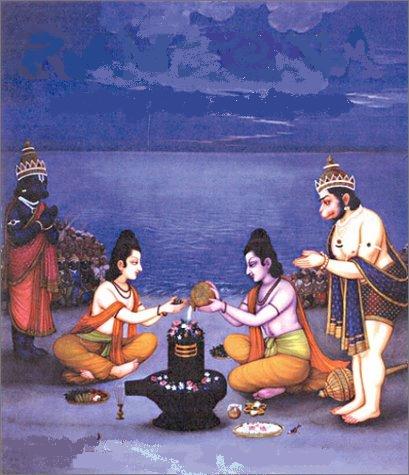
The
Epic of Ramayana.
The World Mythology textbooks they used include the Ramayana as
myth but did not include any stories from the Bible or Koran.
***
Many
of the “World Mythology” textbooks do not include
Muslim
and
Christian stories. Reviewers on the
Amazon web
site, for
example, include comments like these: “The title is something
of a misnomer. This is a fine collection of ancient myths found
throughout world history. However, it is intellectually
dishonest because the author fails to recognize some of the most
powerful myths in human history -- namely those found in the
Bible and Koran”.
You will not find the names of Adam and Eve,
or Jesus or Mary, or Mohammed or Allah in these textbooks,
whereas Rama, Krishna, Indra, Buddha all make multiple
appearances, including pictures of Benares!
Some Indian-Americans don’t see much merit in
complaining about these matters or correcting what is
egregiously wrong in American school text books or classroom
practices. For them, Hinduism is a “mish mash” of cultural
practices accrued over millennia.
Most of these beliefs and
practices is plain obscurantist nonsense, they proclaim. By
conflating the obscurantist aspects of Hinduism with the world
of Hindu knowledge and culture, they ignore the explicit
practice of religious supremacy and academic discrimination in
their own neighborhood. By labeling these concerns as merely
that of the “Hindu Right” or of the “RSS”
Indian-American activists and academics are collaborating in the
decimation of local culture and religious practices in India.
(source: The
World of Myth - By Ramesh Rao - india-forum.com). Watch History
of Ayodhya - videogoogle.com.
Top
of Page
Pax-
Americana
- US
Government meddling in Indian affairs?
State
Dept Rights rap for India but
praises 'rewriting' textbooks
While
lauding the Centre for “rewriting school textbooks” and
“addressing the aftermath of the Gujarat riots”, the
293-page report, titled “Supporting Human Rights and
Democracy,” reiterated concern over the situation in Gujarat.
“Following its electoral victory in
May, the government began to address a number of human rights
concerns that have arisen in recent years. For example, it moved
quickly to rewrite school textbooks... in order to stress the
contributions of the Muslim, Sikh, Buddhist and Christian
minority communities,” it said. However, it said, the
rewriting of the textbooks has not been completed, and alleged
that Gujarat government has not recalled its old textbooks or
announced plans for their replacement.
(source: State
Dept praises 'rewriting' textbooks
- thestatesman.net).
Also refer to America's
Imperial Ambitions - By John G Ikenberry
and chapter on
European Imperialism and
First Indologists.
Refer
to Hindus
and Sikhs Protest Curriculum Changes in Calif. Textbooks -
"Hinduism
is not treated with the same respect as Christianity or
Judaism," Dr. Mihir Meghani, president of the Hindu
American Foundation, told the board. Unlike in those faiths,
"the sacred scriptures of Hinduism are referred to as
legends or myths."
Globodada's
double standards
US Administration has equated the BJP-led NDA Government's
policy decisions with violation of human rights and repeated its
trenchant criticism of Mr Modi. "Following its electoral
victory in May, the (UPA) Government began to address a number
of human rights concerns that have arisen in recent years,"
the report says, adding, "For example, it moved quickly to
rewrite school textbooks (which the previous Government had
rewritten to promote the BJP's Hindu
nationalist propaganda)
in order to stress the contributions of the Muslim, Sikh,
Buddhist and Christian minority communities."

Halebid
temple architecture.
The
report maintains a studied silence on the Godhra massacre in
which Hindus were burned alive.
***
"With a Muslim President, Sikh
Prime Minister, and Christian head of the governing
parliamentary party, India's leadership is
representative of its religious diversity", though this has
not prevented "religiously motivated violence against
Christians and Muslims".
The
report maintains a studied silence on the Godhra massacre in
which Hindus were burned alive.
Unmindful of detention of thousands of
'suspects' without trial or formal charges in 'detention
facilities' at Kabul, Baghdad and Guantanamo Bay, the report
talks of "extra-judicial killings, custodial deaths,
excessive use of force by security forces, torture, poor prison
conditions, and extended pretrial detention." It then goes
on to praise the repealing of POTA but regrets that it has been
replaced with the "amended Unlawful Activities (Prevention)
Act to incorporate a number of POTA's anti-terrorism
provisions" and criticises "POTA-like legislation such
as the Armed Forces Special Powers Act (that) remained in force
in many states, leading to serious human rights
violations."
(source:
Globodada's
double standards - By Kanchan Gupta
- dailypioneer.com March 31 2005).
Letter
to Editor
American State
Department is confused. If I motivate Indians to revive best of
ancient Hindu values and reject all limitations and stupidity of
foreign imported idea then the same sate Department will say
India is lacking freedom of religion.
The
selfish conversion based domination of specific religious agenda
or propaganda based conflict producing agents deviated us from
higher self-realization and conscious evolution. The Hindu
philosophy of self-realization and conscious evolution is still
far more relevant for individual liberty and spiritual democracy
than stupid American concept dogma based religious freedom.
(source:
American
State Department is confused - thestatesman.net).
Refer
to Bible
thumpers: Americans
are being increasingly stereotyped as stupid - By Arvind
Kumar - indiareacts.com).
Top
of Page
Page < 1 2 3 4 5 6 7 8 9 10 11 12 >
|